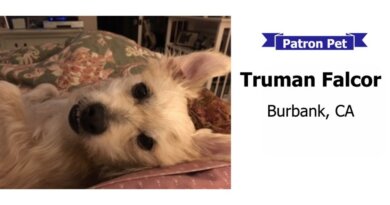If you can’t beat an infestation of purple sea urchins, might as well … eat them? : NPR
What to do with the purple sea urchins gobbling up the California coastline? Scott Simon talks with biologist Doug Bush of the Cultured Abalone Farm in Goleta, Calif., about turning them into food.
SCOTT SIMON, HOST:
If you can’t beat them, eat them. Purple sea urchins – not BJ Leiderman, who does our theme music – have been gobbling the coastlines of California since 2014, edging out the kelp forests, which reduces the living space for other young sea creatures. Red abalone fisheries have suffered, devastating what used to be a $44 million annual industry in California. Some conservationists – conservationists – have even hired divers to smash purple sea urchins with hammers. But maybe there’s a new food industry among purple sea urchins.
Doug Bush is a biologist at the Cultured Abalone Farm in Goleta, Calif., joins us now. Thanks for being with us.
DOUG BUSH: It’s a pleasure to be here.
SIMON: Why are a purple sea urchins sometimes called – by people, not themselves, of course – the zombies of the ocean floor?
BUSH: A couple of reasons. Urchins – purple urchins, in particular – form these aggregates called barrens, in which they amass in very, very large density and eat every little scrap of everything that’s available to them, like, right down to the mineral rock. So they’ll convert a offshore sort of rocky reef into just a stripped down rock where there’s nothing really to sort of sustain all the multiple levels of life in the system. They look sort of like a zombie horde at that density, these little purple robots.
And for sea urchins, what we enjoy in the seafood world is roe, a sort of caviar. And that roe exists when the sea urchins are well fed on a naturally occurring seaweed diet. So in a barren, the sea urchins are completely devoid of roe. They’re unmarketable. They have no commercial value. And they have become something of a conservation challenge.
SIMON: How do you make them delectable to human tastes?
BUSH: So we at one point got together with professional urchin divers. They are going to these barrens, harvesting these empty purple zombie sea urchins from the barrens, bringing them to our farm where we’re tanking them and feeding them over the course of about 10 to 12 weeks. And they just plump right up. You crack them open, and they have, you know, just such a unique flavor that doesn’t exist anywhere else. It’s, you know, simultaneously sweet and creamy and briny. There’s nothing quite like it.
SIMON: So I gather you’ve already been working with some fancy restaurants in California. What do they say? – and the customers?
BUSH: We have. We’ve worked with some wonderful restaurants, from, you know, very casual California sidewalk bistro style, right up to some Michelin star places. And the feedback’s been incredible. You know, that’s not to say it’s without challenges. They’re highly perishable. They’re more delicate than you might expect. And they’re difficult to ship.
SIMON: Sounds more like a gourmet item than peanut butter.
BUSH: It is. And it’s a little bit intimidating if – you know, if you’ve never worked with one before. It doesn’t have to be eaten as a raw sushi-type application if that’s not – you know, if that’s not your preference. You can make a really delightful compound butter on corn on the cob or fresh bread, you know? It can be whisked into pasta. It’s maybe not people’s first instinct to reach for in menu planning, but the uniqueness of it really opens up a lot of possibilities.
SIMON: Can cultivating, ranching – whatever the term of art would be – the purple sea urchin help solve the issue of destruction of the coastline that has so many people worried?
BUSH: At the scale that we’re doing it at our farm – you know, the coast of California is enormous. It would be difficult to really make a dent in that. You know, I really believe in the potential for aquaculture to be that rising tide that lifts boats. You know, there are communities up and down the coast where this urchin issue has created stress. I see no reason why this couldn’t emerge as a real, iconic, future California-specific seafood item that, you know, creates the sort of terroir similar to the wine industry that – you know, that oysters do or any one of, like, these regional specialties.
SIMON: Doug Bush, biologist with the Cultured Abalone Farm, thanks so much for being with us.
BUSH: It’s a delight. Thank you so much for having me.
(SOUNDBITE OF MUSIC)
Copyright © 2022 NPR. All rights reserved. Visit our website terms of use and permissions pages at www.npr.org for further information.
NPR transcripts are created on a rush deadline by an NPR contractor. This text may not be in its final form and may be updated or revised in the future. Accuracy and availability may vary. The authoritative record of NPR’s programming is the audio record.




